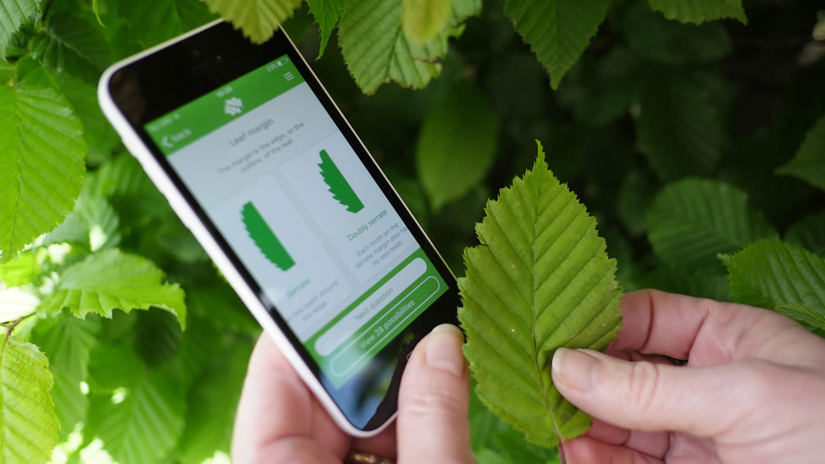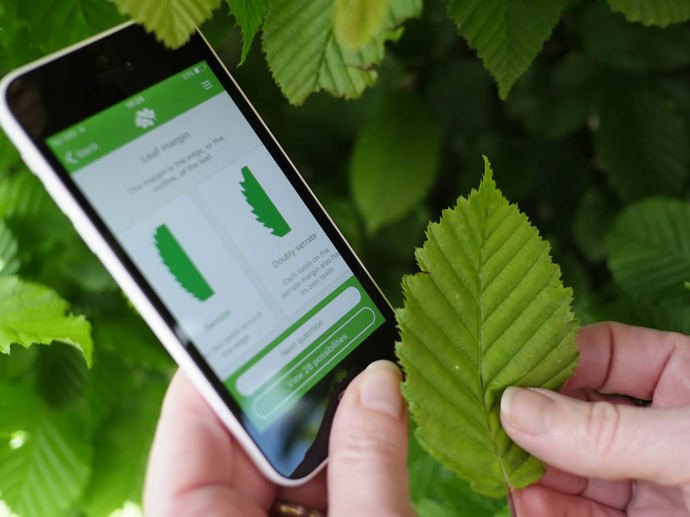Common name: Sitka spruce
Scientific name: Picea sitchensis
Family: Pinaceae
Origin: non-native
Imposing, aged, useful. The Sitka spruce accounts for around half of commercial plantations, and though it’s not as valuable as our native trees, it shelters birds and small mammals.
Common name: Sitka spruce
Scientific name: Picea sitchensis
Family: Pinaceae
Origin: non-native
Imposing, aged, useful. The Sitka spruce accounts for around half of commercial plantations, and though it’s not as valuable as our native trees, it shelters birds and small mammals.
Look out for: the cones which have crinkled and toothed margins.
Identified in winter by: the needles which are flattened when viewed in a cross section. All spruces have a woody peg at the base of every needle, which helps to identify them.

Credit: Laurie Campbell / WTML
Needle-like leaves are straight, flattened and sharp, with two blue-white bands beneath and narrower lines on top.

Credit: Duncan McEwan / naturepl.com
Male flowers are oval-shaped, blunt and pale yellow. Female flowers are red, upright and oval, and are rarely seen as they usually grow at the top of the tree.

Credit: Chris Mattison / naturepl.com
Pollinated by wind, female flowers develop into cylindrical, pale-green cones which ripen to a pale creamy-brown in autumn. The seeds within the cones are small and winged.
Norway spruce (Picea abies). Sitka needles are more harsh and prickly to the touch.


Download our free Tree ID app for Android and iPhone to identify the UK's native and non-native trees. It's an A-Z tree guide in your pocket.
Sitka spruce originates from the west coast of North America and is named after Sitka, Alaska. It was introduced to Britain in 1831 and has been grown for timber in upland plantations ever since, preferring deep, moist, well-drained soils. It tends to flourish in the north and west of the UK on damper and elevated sites.
Sitka spruce is the state tree of Alaska.
Sitka spruce trees grow close together, forming a dense canopy which few plants can grow beneath. However, the dense foliage provides cover from the wind and rain for larger mammals, while birds of prey and smaller birds, such as crossbill, tree creeper, coal tit and siskin, may use Sitka spruce for nesting.

In Native-American mythology, there is a tale of a young man who took up the challenge to twist the trunk of a Sitka spruce tree. He prepared by bathing in the ice-cold sea and wrestled at night with a stranger wearing bearskin. He won his place as chief of the village, and was rewarded with a Sitka-spruce-root hat which contained the spirit of a weasel.

Credit: Richard Becker / WTML
Sitka spruce is an important timber species in the UK, accounting for around 50% of commercial plantations. The wood is versatile and has lots of uses: small trees are particularly useful for making paper, while mature trees are used to make boats and ships, pallets and packing boxes.
Sitka spruce can suffer from attacks by the green spruce aphid, which can defoliate the trees and impact growth. The spruce bark beetle can also be a problem in parts of the UK, and trees can also be affected by root and butt rot.